Skywing Edge 540 91': electric is better!
#1

Thread Starter
Hello Guys,
I am aware that this model has already been written about in this forum but what I like is sharing my experiences with enthusiasts modellist. I started my new setup about a electric conversion of a beautiful aerobatic model with a wingspan of almost 2.4m which is usually powered by a classic 50/70cc petrol engine. The peculiarity of this test of mine is not so much the fact of replacing the motor with a more ecological "brushless" but for the reason that for me it is the first time... I am not fast when it comes to "conversions" because, as you will have way of reading in the past years in my various tests, I have already experimented with electric fans both in small models and in turbine jets.

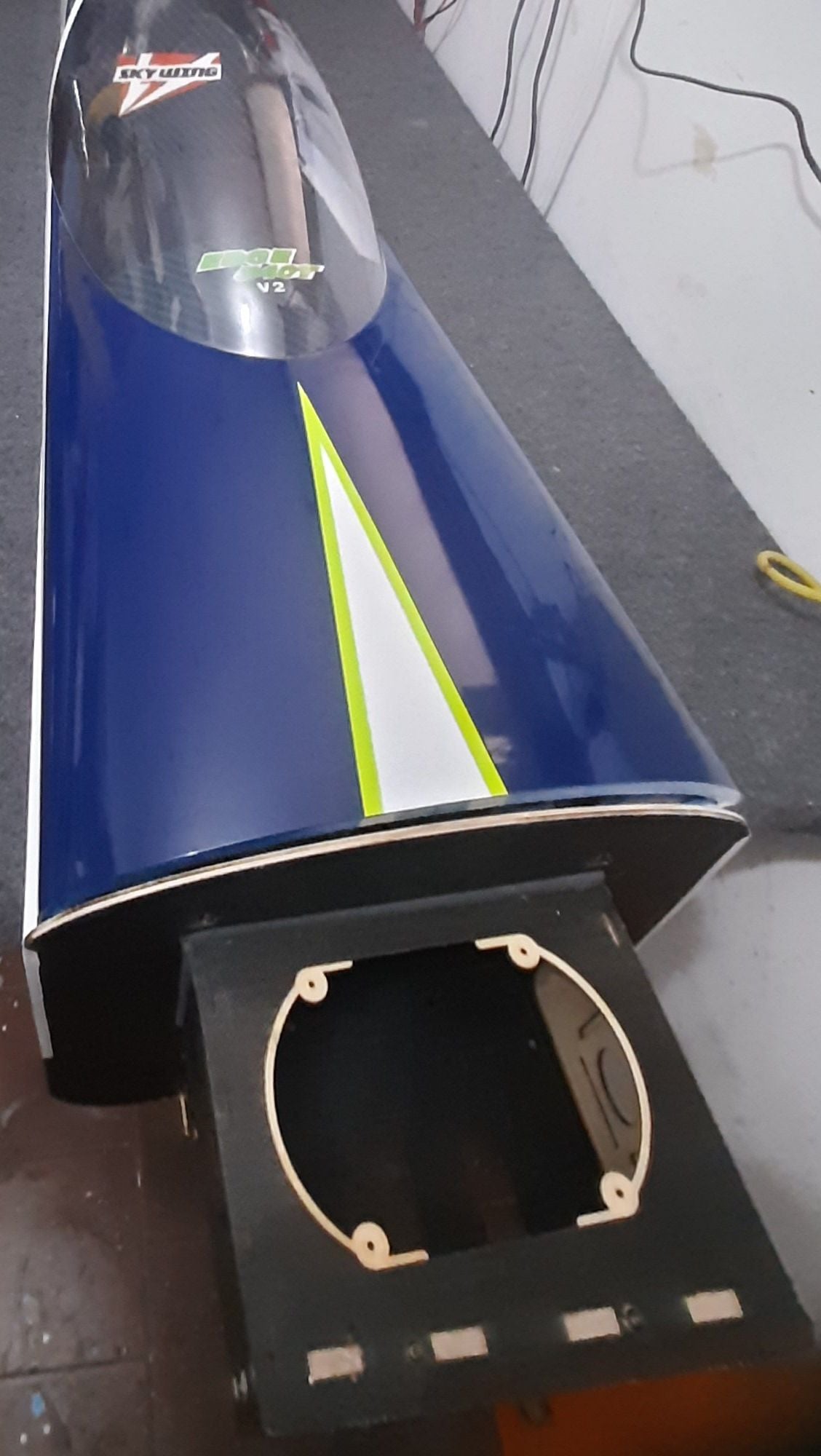
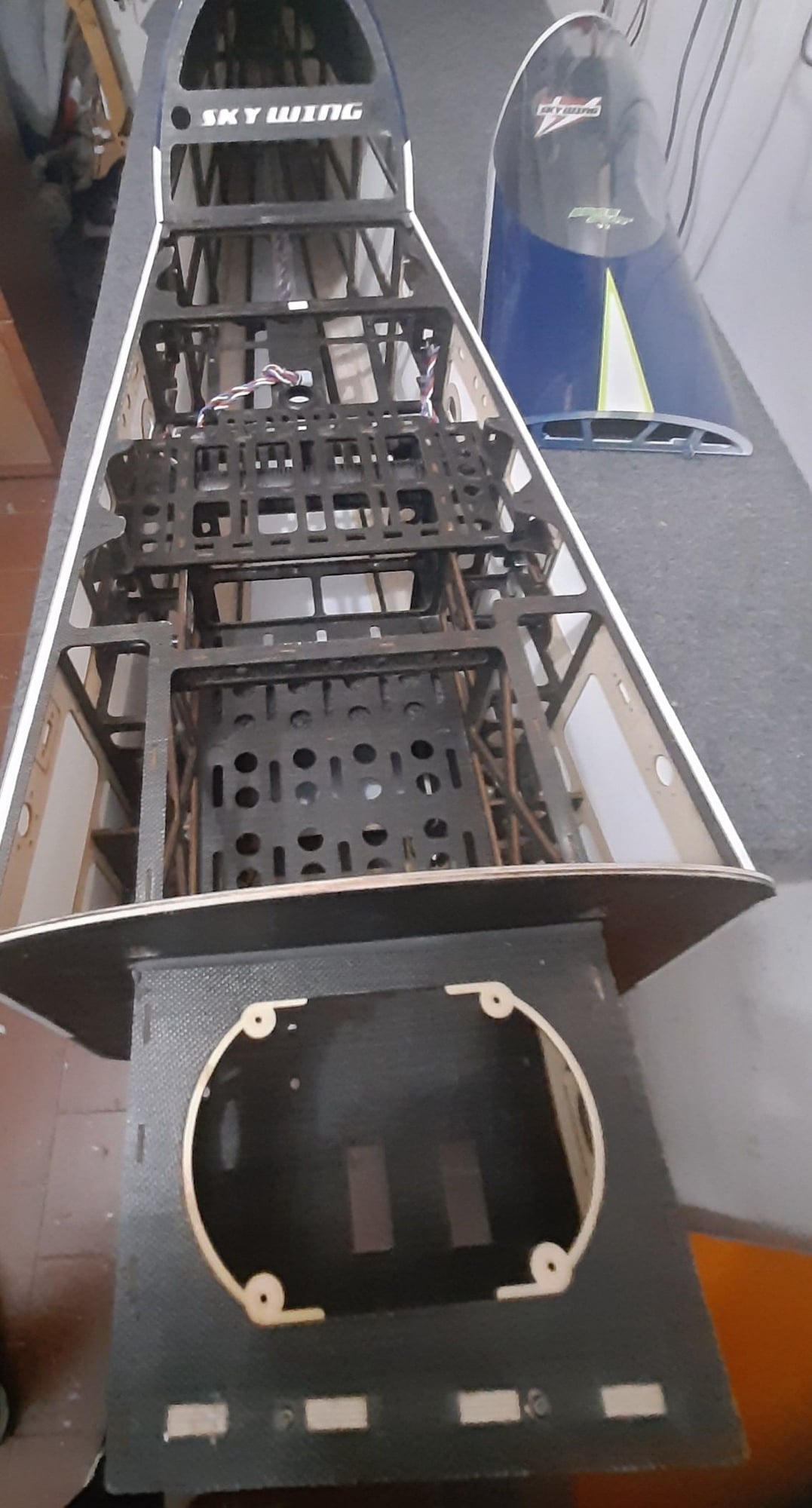

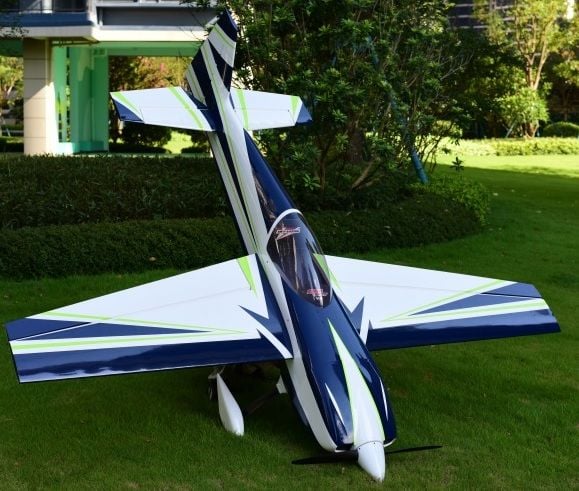
As always, my intent is to give useful information to those who want to undertake this path for the first time, avoiding them from making mistakes (at least I try...). So we will reason with simple words and concepts. But let's go in order.The model that I use to "electrification" is a Skywing Edge 540 with a 91' wingspan that I had already purchased from the legendary Mattfly after a crash of my legendary Extra 330SC with a DA70Twin that accompanied me in the fields for many years (and of which I have done an accurate review). Without dwelling too much on the model I can only say that, despite costing a little more than the average, it appears to be particularly refined both in the covering and in the structure which has all the laser-cut wooden parts covered with a thin carbon sheet which makes the structure very rigid. Very interesting are the quick release and fastening devices for the wings, quote and canopy with a magnetic system (fantastic!). The weight declared by the manufacturer is around 9.2kg. We will see at the end of the work if it is truthful. I will divide my review into distinct sections that will take into consideration the different aspects of the setup.
I am aware that this model has already been written about in this forum but what I like is sharing my experiences with enthusiasts modellist. I started my new setup about a electric conversion of a beautiful aerobatic model with a wingspan of almost 2.4m which is usually powered by a classic 50/70cc petrol engine. The peculiarity of this test of mine is not so much the fact of replacing the motor with a more ecological "brushless" but for the reason that for me it is the first time... I am not fast when it comes to "conversions" because, as you will have way of reading in the past years in my various tests, I have already experimented with electric fans both in small models and in turbine jets.





As always, my intent is to give useful information to those who want to undertake this path for the first time, avoiding them from making mistakes (at least I try...). So we will reason with simple words and concepts. But let's go in order.The model that I use to "electrification" is a Skywing Edge 540 with a 91' wingspan that I had already purchased from the legendary Mattfly after a crash of my legendary Extra 330SC with a DA70Twin that accompanied me in the fields for many years (and of which I have done an accurate review). Without dwelling too much on the model I can only say that, despite costing a little more than the average, it appears to be particularly refined both in the covering and in the structure which has all the laser-cut wooden parts covered with a thin carbon sheet which makes the structure very rigid. Very interesting are the quick release and fastening devices for the wings, quote and canopy with a magnetic system (fantastic!). The weight declared by the manufacturer is around 9.2kg. We will see at the end of the work if it is truthful. I will divide my review into distinct sections that will take into consideration the different aspects of the setup.
#2

Thread Starter
The choice of engineSince we don't need to use fossil fuel for the combustion engine, we can store the tank, refueling socket, fuel pipes, etc. in the drawer. My first idea was to install a classic Rotomax 50CC on the model (the one launched by Hobbyking and which can be found almost everywhere online but due to the fact that it was not available and that in Europe it was sold at prices according me out of the market, I surfed the web a bit and on the various specialized forums finding the solution that I considered a good compromise: a Dualsky GA6000 160Kv 28 poles (180Kv also exists) which can be powered up to 12S. The weight is 1 .2kg approximately and develops a peak power of 8.4HP at 130A. Compared to the 180Kv one, it has a lower power of approximately 9% but a maximum absorption of 7%. Various recommended propellers ranging from 22x10, 23x8, 23x10 at 24x8, 24x9, 24x10, 25x10. I had a 24x10 carbon Mejzlink at home and therefore I used this one which in the Dualsky tests on the bench at 12S develops 17kg of pull at peak power with 125A of absorption in the performance curve this engine with half the throttle delivers around 6kg of pull with just over 25° of absorption (!).
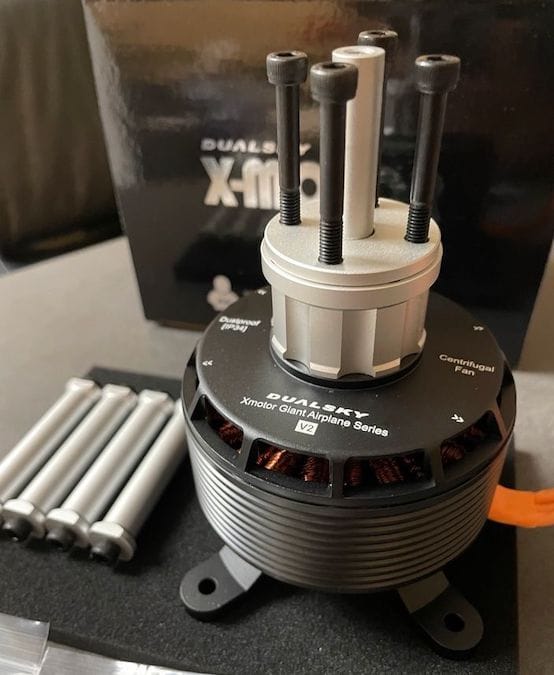
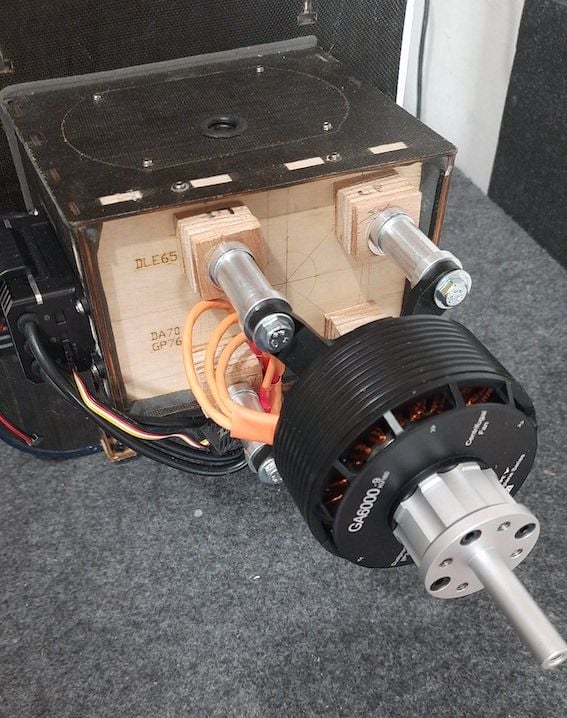




#3

Thread Starter
For a big motor a powerful ESC!
Here I am continuing, little by little, with my review. Today we talk about voltage regulators for electric motors. To manage this powerful Dualsky GA6000 engine, which is actually very beautiful aesthetically and massive on the construction side (see crankshaft, support flange for the spinner plate and propeller and body) I had to choose a regulator that was up to the level of performance.
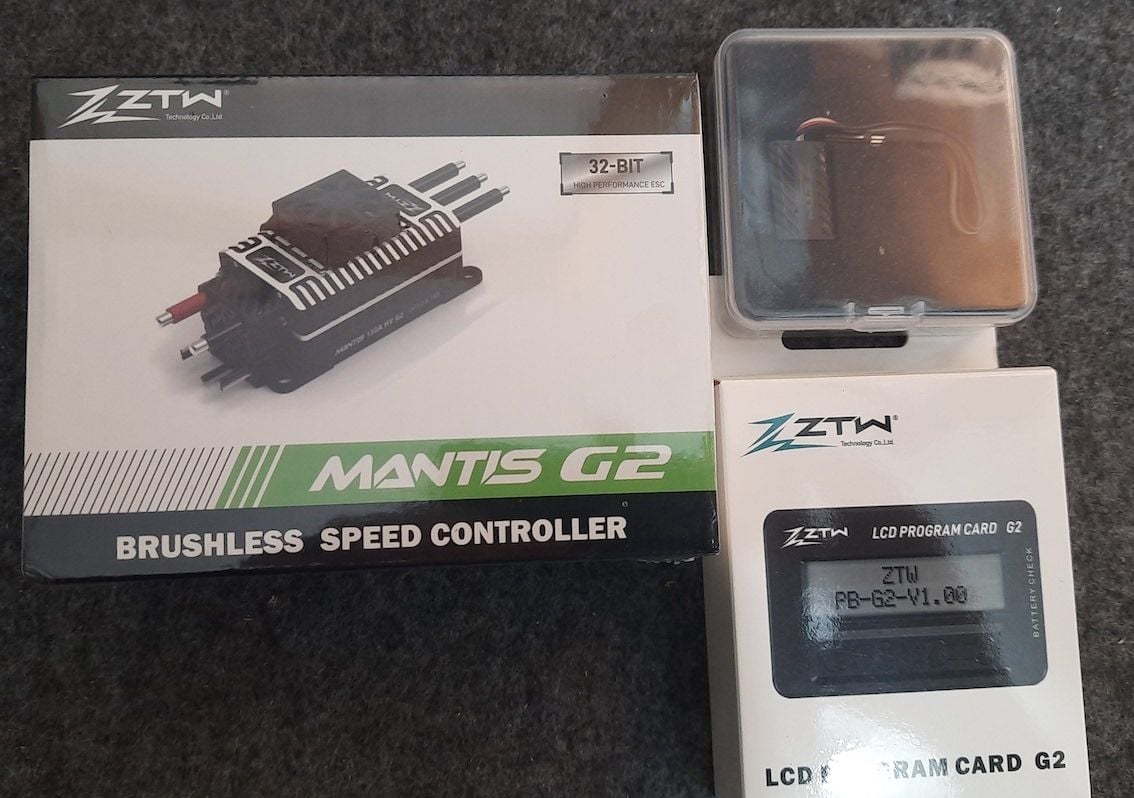


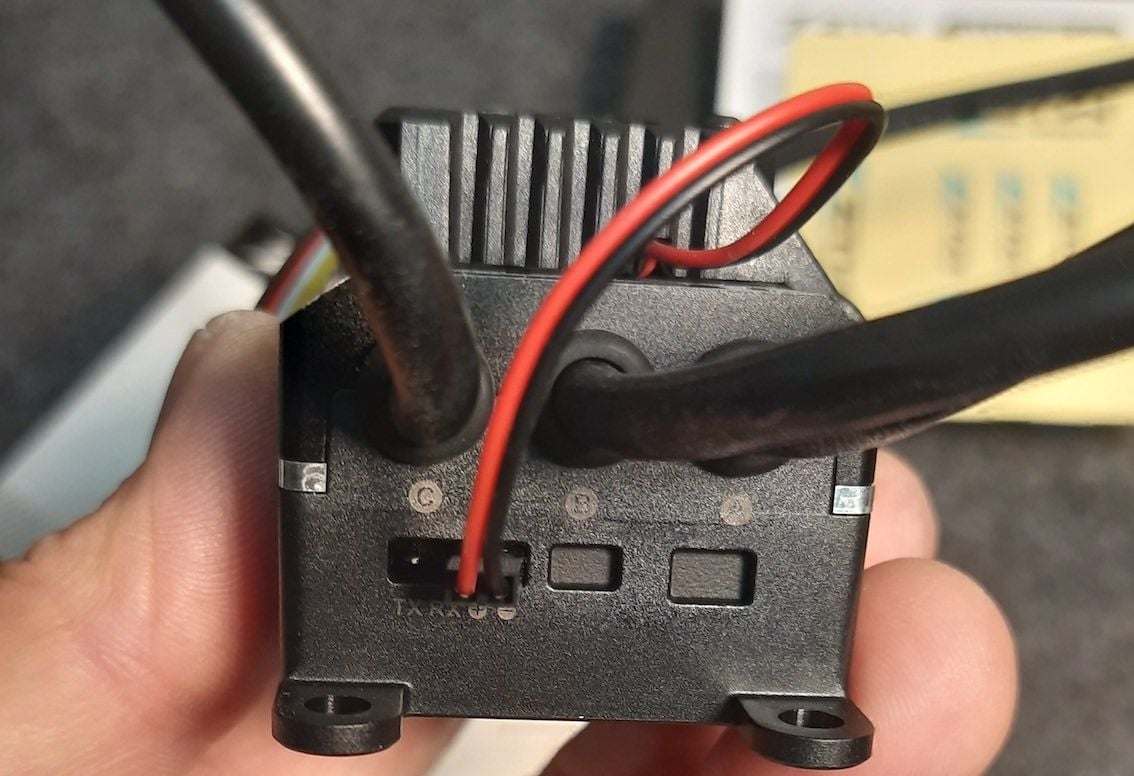
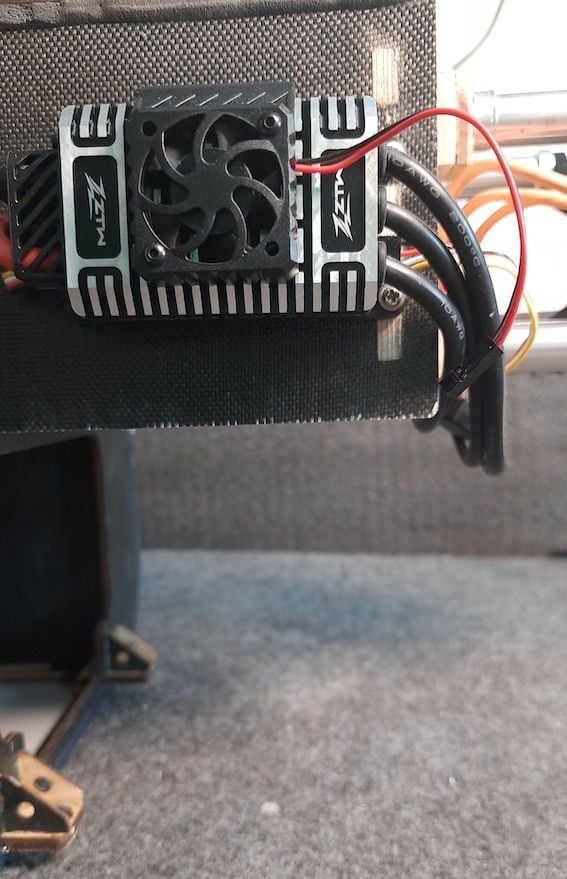

The brushless controller is in fact the most important device in an electric motor: not only does it allow simple min/max adjustment of the power (and rpm) of the electric motor, but it must resist both operating temperatures (often high) and absorption loads (Ah, ampere) which in our case can even reach peaks of 125Ah. There are a vast variety of them on the market with features for all needs but, often, they are from unknown companies (at least to me...) that are not popular among model makers or that have prices that are too low to have an adequate quality standard. In my laboratory I have an HV regulator for 12S which had a maximum absorption of 120Ah and which I therefore did not use to avoid running into overload problems. I therefore had to purchase a new ESC and after personal evaluations which concerned both the brand, the quality and the cost, I decided to purchase a 160A (Opto) ZTW Mantis HV G2 which can support up to 14S and a peak amperage of 180A (therefore well above my needs). The oversizing allows me to feel more at ease regarding the amperages and a possible temperature peak. In my tests I had already used a ZTW brushless voltage regulator but only for EDF motors and I had already had good feedback in terms of quality and performance. The ZTW Mantis HV G2 160Amp. It weighs 230 grams (in line with regulators in the same range) for a size of 78x54x32mm (but this configuration is available in the same model starting from 25A).
Salient features of this ESC are a new 32-bit processor, a particularly efficient heat dissipation system (thanks to a fan that is factory installed in the upper part of the ESC and which takes power from a 4-pin port also used for programming) and the possibility of managing the rotation inversion from the remote control. This function is obtained by connecting to the Rx an additional yellow cable present where the plug that goes to the Rx is in the motor channel and, using another channel on the TX it is possible to reverse the rotation of the motor (this is useful for the fans!). Of note is the real-time management of regulator data such as current, voltage, temperature, RPM, accelerator and ESC status thanks to the optional Bluethoot interface combined with its specific smartphone application and therefore limited to the vicinity of the model; this accessory (cost approximately 24 euros) is useful for modifying the operating parameters even on the flying field. Alternatively, for programming you can use the small ZTW viewer (not included) or even via Tx like all Esc. The 160A ZTW Mantis HV G2 is also equipped with a
safety protection that allows power to be cut off to the motor if the transmitter signal is lost for more than 2 seconds.
This ESC does not have the output to power the receiver as it is (Opto) but this is a condition common to high power regulators which therefore require a separate power system for the receiver. In my case I used two 2S batteries combined with a Pioneer Powerbox servo control unit (cheap, small in size and very convenient both to set up and use).In practice, during the first tests, the regulator proved to be very precise in the linearity of its response to acceleration and despite having subjected it to prolonged tests with a 24x10 carbon propeller, overheating was never excessive (the regulator goes into overdrive above 110 degrees). protection and limits the number of revolutions to allow cooling).
Here I am continuing, little by little, with my review. Today we talk about voltage regulators for electric motors. To manage this powerful Dualsky GA6000 engine, which is actually very beautiful aesthetically and massive on the construction side (see crankshaft, support flange for the spinner plate and propeller and body) I had to choose a regulator that was up to the level of performance.






The brushless controller is in fact the most important device in an electric motor: not only does it allow simple min/max adjustment of the power (and rpm) of the electric motor, but it must resist both operating temperatures (often high) and absorption loads (Ah, ampere) which in our case can even reach peaks of 125Ah. There are a vast variety of them on the market with features for all needs but, often, they are from unknown companies (at least to me...) that are not popular among model makers or that have prices that are too low to have an adequate quality standard. In my laboratory I have an HV regulator for 12S which had a maximum absorption of 120Ah and which I therefore did not use to avoid running into overload problems. I therefore had to purchase a new ESC and after personal evaluations which concerned both the brand, the quality and the cost, I decided to purchase a 160A (Opto) ZTW Mantis HV G2 which can support up to 14S and a peak amperage of 180A (therefore well above my needs). The oversizing allows me to feel more at ease regarding the amperages and a possible temperature peak. In my tests I had already used a ZTW brushless voltage regulator but only for EDF motors and I had already had good feedback in terms of quality and performance. The ZTW Mantis HV G2 160Amp. It weighs 230 grams (in line with regulators in the same range) for a size of 78x54x32mm (but this configuration is available in the same model starting from 25A).
Salient features of this ESC are a new 32-bit processor, a particularly efficient heat dissipation system (thanks to a fan that is factory installed in the upper part of the ESC and which takes power from a 4-pin port also used for programming) and the possibility of managing the rotation inversion from the remote control. This function is obtained by connecting to the Rx an additional yellow cable present where the plug that goes to the Rx is in the motor channel and, using another channel on the TX it is possible to reverse the rotation of the motor (this is useful for the fans!). Of note is the real-time management of regulator data such as current, voltage, temperature, RPM, accelerator and ESC status thanks to the optional Bluethoot interface combined with its specific smartphone application and therefore limited to the vicinity of the model; this accessory (cost approximately 24 euros) is useful for modifying the operating parameters even on the flying field. Alternatively, for programming you can use the small ZTW viewer (not included) or even via Tx like all Esc. The 160A ZTW Mantis HV G2 is also equipped with a
safety protection that allows power to be cut off to the motor if the transmitter signal is lost for more than 2 seconds.
This ESC does not have the output to power the receiver as it is (Opto) but this is a condition common to high power regulators which therefore require a separate power system for the receiver. In my case I used two 2S batteries combined with a Pioneer Powerbox servo control unit (cheap, small in size and very convenient both to set up and use).In practice, during the first tests, the regulator proved to be very precise in the linearity of its response to acceleration and despite having subjected it to prolonged tests with a 24x10 carbon propeller, overheating was never excessive (the regulator goes into overdrive above 110 degrees). protection and limits the number of revolutions to allow cooling).
#4

Thread Starter
Here we go again. Let's continue with what concerns the regulator.
Before being used, the ZTW Mantis HV G2 (the factory settings are set for standard use of brushless motors for propeller aircraft) must be "taught" for the throttle stroke from 0 to 100 (min./max.) for optimize the acceleration curve. To do this, simply turn on the radio first and place the accelerator stick in the max position. (100%). Then connect the battery to the ESC and wait about 2 seconds after which the motor will emit two acoustic signals: at this point you will have to return the accelerator stick to the minimum position (0%); the success of the gas stroke detection operation will be confirmed by a new acoustic signal. This calibration procedure is similar to practically all ESCs but is essential for correct modulation of engine power. Finally, I would like to say a few more words about the convenience of the Android app which, with the Bluetooth module, is easy and intuitive and always at hand. The Bluetooth module can be left connected to the regulator even in flight but I am of the opinion that the less electronics you bring on the flight the better, so I remove it.
Finally, an important thing regarding the operation of a 28-pole (or more) engine like the Dualsky GA6000: someone asked me if my engine had jerks or hiccups when going from 0 to 100% throttle: as I have already replied privately, at the moment I have not noticed similar problems but to be sure I inquired directly from Dualsky who kindly replied that these "disturbances" are not engine malfunctions but can occur if you do not use the latest generation regulators that have 32-bit processors. And in fact my ZTW Mantis satisfies precisely these needs and goes very well...
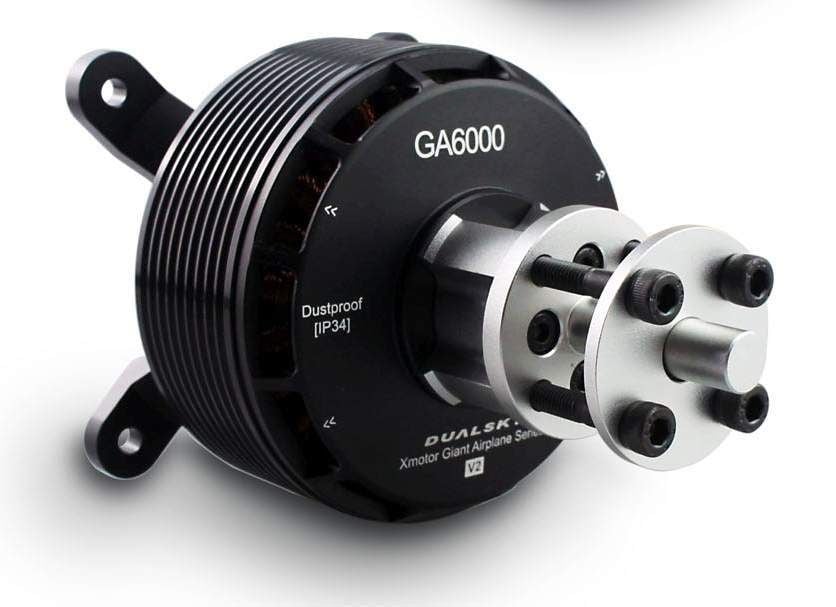
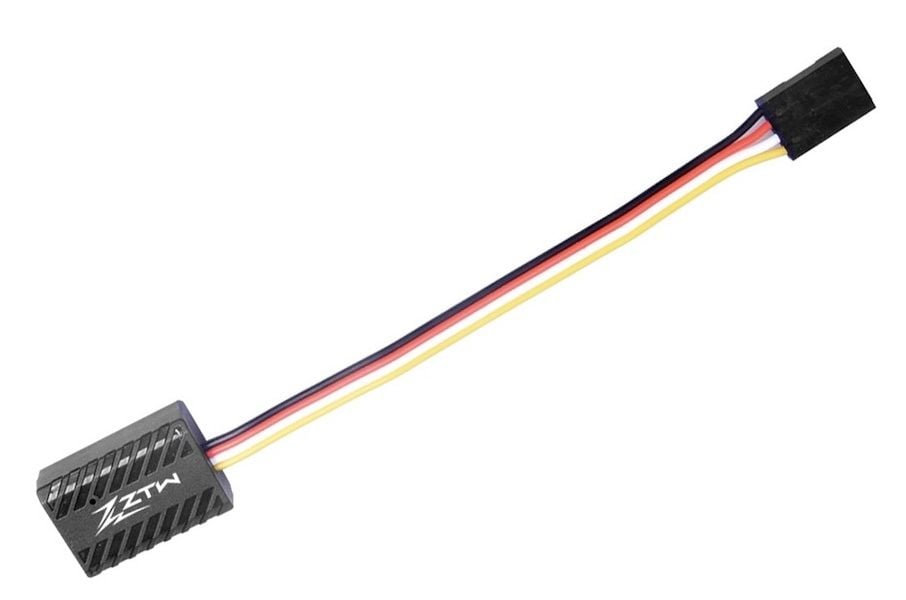
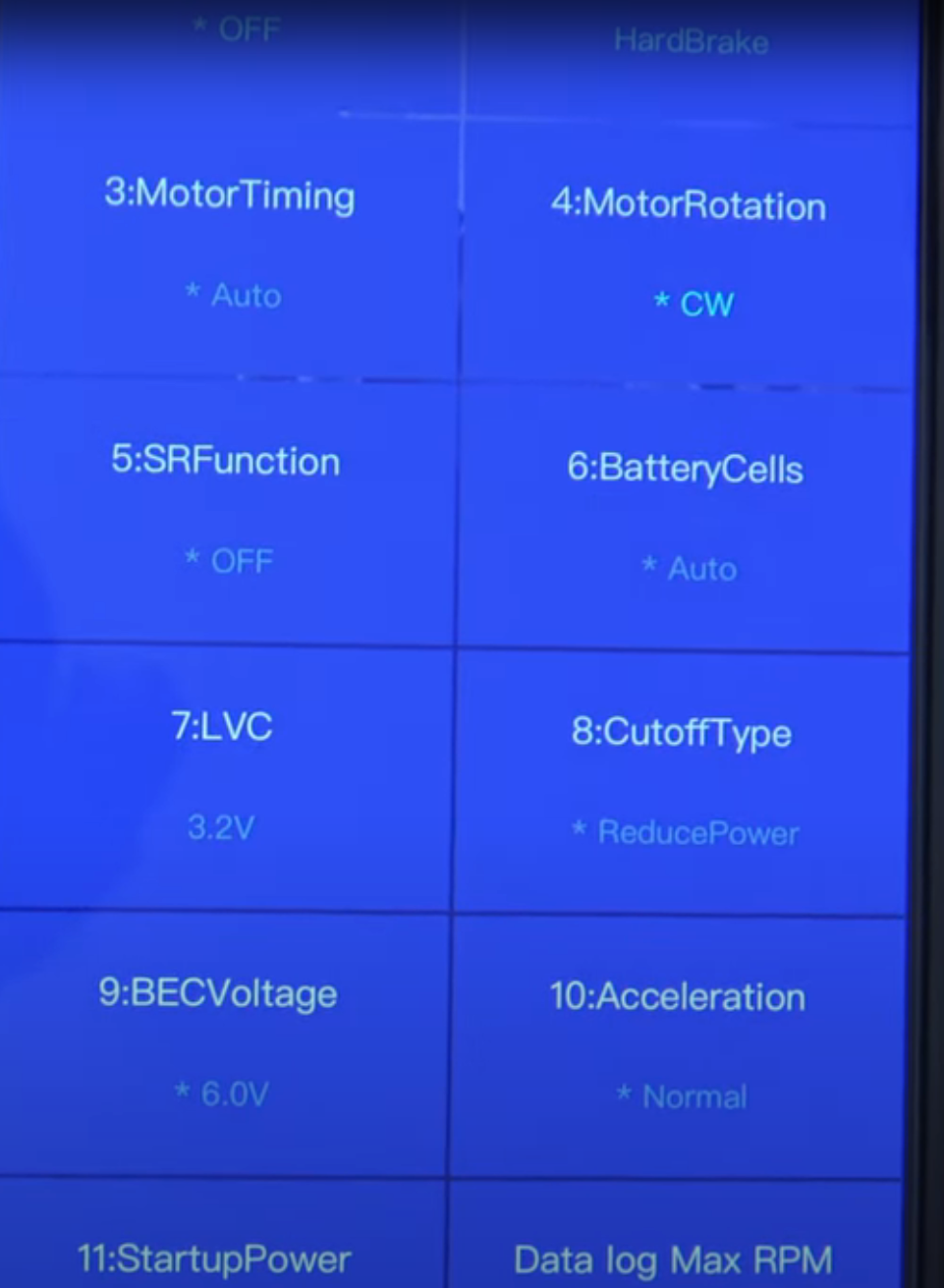



Before being used, the ZTW Mantis HV G2 (the factory settings are set for standard use of brushless motors for propeller aircraft) must be "taught" for the throttle stroke from 0 to 100 (min./max.) for optimize the acceleration curve. To do this, simply turn on the radio first and place the accelerator stick in the max position. (100%). Then connect the battery to the ESC and wait about 2 seconds after which the motor will emit two acoustic signals: at this point you will have to return the accelerator stick to the minimum position (0%); the success of the gas stroke detection operation will be confirmed by a new acoustic signal. This calibration procedure is similar to practically all ESCs but is essential for correct modulation of engine power. Finally, I would like to say a few more words about the convenience of the Android app which, with the Bluetooth module, is easy and intuitive and always at hand. The Bluetooth module can be left connected to the regulator even in flight but I am of the opinion that the less electronics you bring on the flight the better, so I remove it.
Finally, an important thing regarding the operation of a 28-pole (or more) engine like the Dualsky GA6000: someone asked me if my engine had jerks or hiccups when going from 0 to 100% throttle: as I have already replied privately, at the moment I have not noticed similar problems but to be sure I inquired directly from Dualsky who kindly replied that these "disturbances" are not engine malfunctions but can occur if you do not use the latest generation regulators that have 32-bit processors. And in fact my ZTW Mantis satisfies precisely these needs and goes very well...






#5

Thread Starter
New entry also for servos: Forza Yantrs!
We finish electronics setup of this model with the choice of servos to install which, given the size and weight of the model, as well as the large moving parts to manage, could only be up to the task. And the opportunity to carry out this test was perfect to "experiment" with a new line of servos with very interesting characteristics but which I didn't know existed until I came across some websites where they spoke very well about it . They are produced by a Chinese company (and this is obvious...) "Yantrs" which specializes in the research, design, development and creation of high-end products for RC remote control which has set itself the goal of putting them on the market at a cost that is currently as low as possible. I took a look at the Yantrs servo catalog and realized that, unlike many other companies, the Yantrs servo catalog is essential and designed to meet the needs of an increasingly demanding modeling market in terms of quality and price.
What struck me most when I started reading the characteristics of these servos is the particularity of the gears they mount which are not of a traditional shape but machined obliquely (called helical) which, say the Yantrs engineers, have the characteristic of engaging more gradually with smoother operation which helps reduce shock loads (so they should last longer...), more stable torque transmission with less noise and vibration. These types of gears, unknown in servos until recently, are now increasingly found in other brands in the RC world.
From the Yantrs catalog I chose the B0850MGX-E servo with brushless motor, programmable rotation angle, pitch resolution with 14bit processor and high precision thanks to a high resolution magnetic sensor (therefore no potentiometer present in the servo). Programming compatible with SR/SSR/SUR/SFR super fast mode.
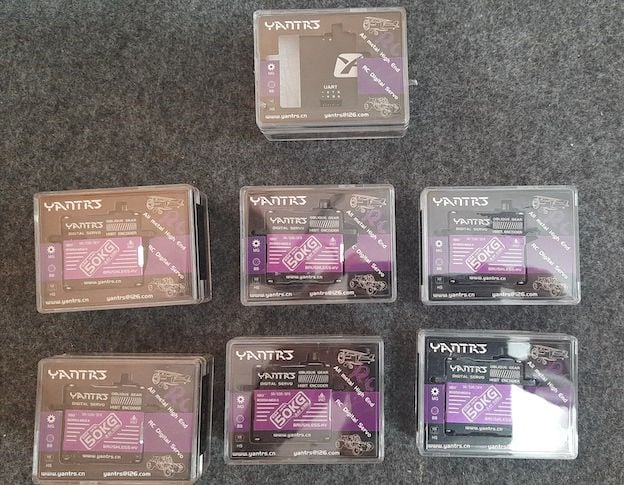
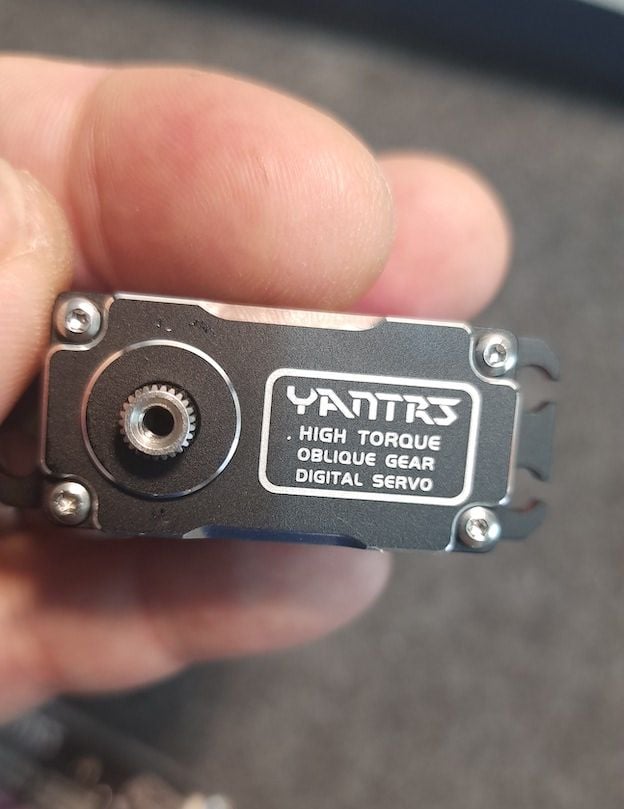
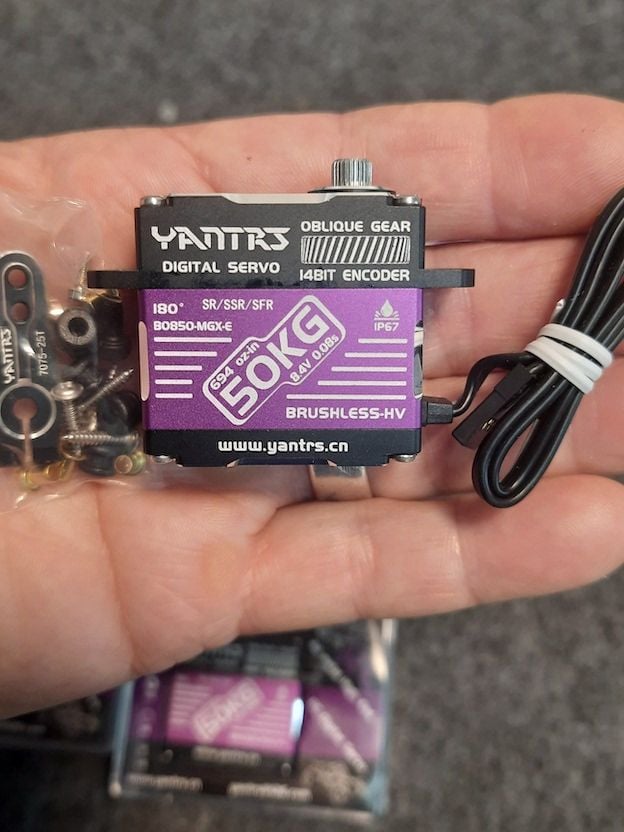
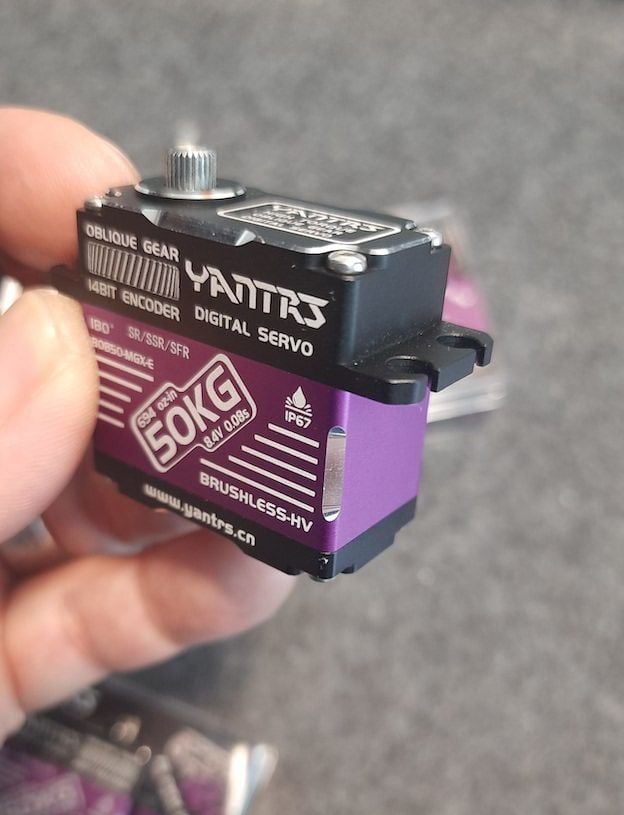
We finish electronics setup of this model with the choice of servos to install which, given the size and weight of the model, as well as the large moving parts to manage, could only be up to the task. And the opportunity to carry out this test was perfect to "experiment" with a new line of servos with very interesting characteristics but which I didn't know existed until I came across some websites where they spoke very well about it . They are produced by a Chinese company (and this is obvious...) "Yantrs" which specializes in the research, design, development and creation of high-end products for RC remote control which has set itself the goal of putting them on the market at a cost that is currently as low as possible. I took a look at the Yantrs servo catalog and realized that, unlike many other companies, the Yantrs servo catalog is essential and designed to meet the needs of an increasingly demanding modeling market in terms of quality and price.
What struck me most when I started reading the characteristics of these servos is the particularity of the gears they mount which are not of a traditional shape but machined obliquely (called helical) which, say the Yantrs engineers, have the characteristic of engaging more gradually with smoother operation which helps reduce shock loads (so they should last longer...), more stable torque transmission with less noise and vibration. These types of gears, unknown in servos until recently, are now increasingly found in other brands in the RC world.
From the Yantrs catalog I chose the B0850MGX-E servo with brushless motor, programmable rotation angle, pitch resolution with 14bit processor and high precision thanks to a high resolution magnetic sensor (therefore no potentiometer present in the servo). Programming compatible with SR/SSR/SUR/SFR super fast mode.









